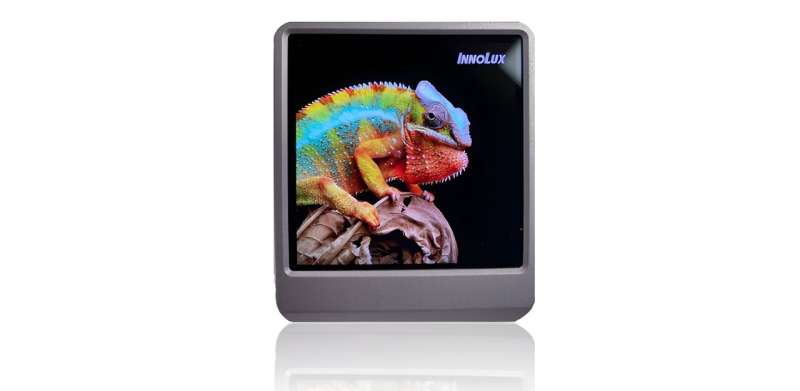
In recent years, there’s been a growing desire for improved virtual reality (VR) displays. People want VR experiences to feel even more realistic and immersive. However, a common issue known as the “screen door effect” has been a hindrance to achieving this immersion. This effect is like looking through a screen door, where users see a grid-like pattern on VR screens due to low resolution problems, which diminishes the overall visual quality.
To overcome this challenge, VR displays have undergone significant enhancements in various specifications, including resolution, color quality, and response speed. Back in 2017, VR displays usually had resolutions of 500–600 pixels per inch (PPI). But the VR displays available now typically have resolutions of around 1200 PPI, which still have room for improvement. Enter the proposed 2117 PPI 4K VR LCD, a promising solution that offers better image quality.
Moreover, VR LCDs with high partition mini LED backlighting have demonstrated substantial improvements in contrast, color accuracy, and viewing angles, placing them in direct competition with the esteemed micro OLED displays.
When it comes to choosing the right display technology for VR applications, each has its unique advantages and drawbacks. Micro OLED displays, especially the ones built on silicon, provide VR experiences with very high resolution. However, they are quite expensive and require more complex optical designs compared to LCDs because of their small size.
On the other hand, VR LCDs excel in providing a broader field of view (FOV) despite facing challenges related to color contrast and pixel size. The integration of mini-LED backlighting has boosted LCD performance, making it competitive with micro OLED, especially in terms of response time, contrast, luminance, and lifespan. LCDs shine in their ability to deliver larger panel sizes, enhancing the immersive VR experience.
In contrast, Micro OLED and Micro LED displays are made for high-end markets, but they are quite expensive. In contrast, LCDs are a more affordable choice, making them accessible to a wider range of people.
As one of the researchers developing the technology, Dr. Yung-Hsun Wu of Innolux Technology Development Center emphasizes the importance of innovation in high-resolution VR LCDs, stating, “Addressing the challenges of designs above 2000 PPI demands ingenuity. We are focused on enhancing pixel aperture ratios, liquid crystal efficiency, and transmittance while also proposing methods to reduce power consumption and enhance backlight efficiency.”
“Our goal is to maintain image quality in these high-resolution designs while delivering energy-efficient solutions to our customers.”
In practical terms, these advancements in VR display technology extend beyond the realm of gaming and entertainment. They find application in various industries, such as health care, where high-quality VR displays aid in medical training simulations, enabling professionals to practice surgeries and procedures realistically. In the automotive sector, VR displays play a pivotal role in designing and testing vehicle interiors and user interfaces. Architectural firms harness VR technology to create immersive virtual walkthroughs of building designs, offering clients a lifelike preview of their projects.
Published in the Journal of Optical Microsystems, the research introduces an exciting advancement in high-quality virtual reality (VR) displays, specifically a 2117-ppi LCD. This technology brings significant improvements, making VR experiences more immersive by enhancing the range of colors and reducing the annoying “screen door” effect where you see a grid on the screen.
The paper explores the challenges and potential solutions for creating LCDs with over 2000-ppi resolution. It discusses how to design pixels to make them work better, increase the efficiency of the liquid crystal used in the display, and improve how much light gets through. Additionally, the paper suggests using mini-LED backlight and low-power solutions to make sure these high-resolution displays maintain excellent image quality while using less energy.
More information:
Yung-Hsun Wu et al, Breaking the limits of virtual reality display resolution: the advancements of a 2117-pixels per inch 4K virtual reality liquid crystal display, Journal of Optical Microsystems (2023). DOI: 10.1117/1.JOM.3.4.041208
Citation:
New tech reduces visibility of the annoying grid pattern that appears on virtual reality screens (2023, October 19)
retrieved 20 October 2023
from https://techxplore.com/news/2023-10-tech-visibility-annoying-grid-pattern.html
This document is subject to copyright. Apart from any fair dealing for the purpose of private study or research, no
part may be reproduced without the written permission. The content is provided for information purposes only.
Stay connected with us on social media platform for instant update click here to join our Twitter, & Facebook
We are now on Telegram. Click here to join our channel (@TechiUpdate) and stay updated with the latest Technology headlines.
For all the latest Technology News Click Here
For the latest news and updates, follow us on Google News.
